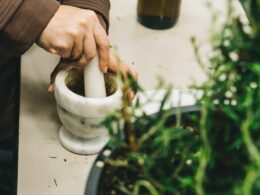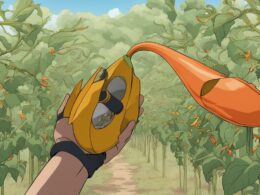Do you have begonias in your garden? If so, you may be wondering how often you should deadhead them to keep them looking their best.
Deadheading is an important task for any gardener, as it helps to promote healthy growth and ensures that your plants stay in bloom longer.
Deadheading is the process of removing spent flowers from your plants. By doing so, you encourage the plant to produce more blooms and prevent it from putting energy into producing seeds. This not only keeps your plants looking beautiful, but it also helps to promote their overall health.
In this article, we’ll take a closer look at how often you should deadhead your begonias and why it’s so important. So, let’s get started!
Understanding the Importance of Deadheading Begonias
If you want your begonias to continue blooming beautifully, it’s crucial to understand the importance of removing spent flowers. Deadheading, or pruning off faded blooms, promotes new growth and encourages the plant to produce more flowers. This is because when flowers die, the plant redirects its energy towards seed production rather than creating new blooms.
Aside from promoting new growth, deadheading also plays a vital role in preventing disease in your begonias. When you leave spent flowers on the plant, they can rot and attract pests and diseases. This can quickly spread throughout the plant and even to nearby plants, causing irreversible damage.
By regularly removing dead flowers, you can help keep your begonias healthy and vibrant.
Overall, deadheading is a simple but essential step in maintaining the health and beauty of your begonias. By regularly pruning off spent flowers, you can encourage new growth, prevent disease, and ensure that your plant continues to bloom abundantly.
So, the next time you notice faded blooms on your begonias, take a few minutes to deadhead them. Your plants will thank you for it!
Types of Begonias
As you explore the diverse world of begonias, you’ll discover an array of fascinating varieties, each with unique characteristics and requirements for optimal growth and care.
Some of the most popular types of begonias are the Rex begonias and Tuberous begonias. Rex begonias are known for their stunning foliage, which comes in a range of colors and patterns. These begonias require indirect sunlight and regular watering to thrive.
On the other hand, Tuberous begonias are prized for their showy flowers, which come in a variety of hues. These begonias prefer bright, indirect sunlight and well-draining soil.
When it comes to caring for begonias, it’s important to choose the right type for your environment and to provide them with the proper care. For example, Rex begonias are sensitive to changes in temperature and humidity, so it’s important to keep them in a consistent environment. Tuberous begonias, on the other hand, need to be protected from frost and should be planted in well-draining soil to prevent root rot.
Whether you’re a seasoned gardener or a novice, there’s a begonia out there for you. By understanding the different types of begonias and their unique needs, you can create a beautiful, thriving garden that will bring you joy for years to come.
So go ahead and explore the world of begonias – you won’t be disappointed!
Is Deadheading Necessary for Dahlias as well?
Deadheading dahlias is essential to prevent negative effects of not deadheading dahlias. By removing faded flowers, you encourage the plant to redirect energy towards producing new blooms. Regular deadheading improves the overall health and appearance of dahlias, ensuring they continue to flower abundantly throughout the season.
When to Deadhead Begonias
When taking care of your begonias, regular maintenance is key. One important task is deadheading, which involves removing old blooms to encourage new growth.
You should deadhead your begonias after they’ve finished blooming or when you notice their flowers are faded or drooping.
Regular Maintenance
Keep your begonias healthy and thriving with regular maintenance. This includes removing spent blooms. Deadheading your begonias regularly promotes new growth and extends their blooming period. To deadhead your begonias, simply pinch off the spent flowers using your fingers or a pair of scissors. Be sure to remove the entire flower stem to prevent any damage to the plant.
Aside from deadheading, your begonias also need proper pruning techniques and a consistent watering schedule. Pruning your begonias helps promote their overall health and shape. Cut back any leggy or overgrown stems to encourage bushier growth.
As for watering, begonias prefer moist but well-draining soil. Water your begonias when the top inch of soil feels dry to the touch, and avoid overwatering to prevent root rot.
By following these simple maintenance steps, your begonias will thrive and continue to bring beauty to your home or garden.
After Blooming
To keep your begonias healthy and promote new growth, you’ll want to remove spent blooms by pinching off the entire flower stem. This process, known as deadheading, is important to maintain the appearance of your begonias and to prolong their blooming period.
Pruning techniques can vary depending on the type of begonia you have, so it’s important to research the specific needs of your plant. When deadheading your begonias, be sure to use sharp, clean scissors or pruning shears to avoid damaging the plant. Cut the stem just above a leaf or lateral bud to encourage new growth.
Be sure to deadhead regularly, especially during the blooming season, to keep your begonias looking their best. By following these simple pruning techniques, you can prolong the blooming of your begonias and keep them healthy and vibrant.
When Flowers are Faded or Drooping
If your begonias are looking a bit sad and tired with faded or drooping flowers, it’s time to give them a little TLC to help them bounce back to their beautiful and vibrant selves.
Pruning techniques can be used to remove the faded or drooping flowers, which will encourage new growth and blooming. Deadheading begonias is an essential step in maintaining their plant health and appearance.
To begin, locate the faded or drooping flowers on your begonia plant. Using a pair of clean and sharp pruning shears, cut the stem just above the first set of leaves below the flower. This technique will not only remove the unsightly flower but also promote new growth and prevent the plant from putting energy into producing seeds.
Remember to clean your pruning shears with rubbing alcohol before and after use to prevent the spread of diseases.
By deadheading your begonias regularly, you’ll not only keep them looking beautiful but also help maintain their overall health.
How to Deadhead Begonias
Ready to give your begonias a makeover? Here’s how to deadhead them and promote healthy growth.
Deadheading begonias is a simple process that involves removing the spent blooms with a pair of pruning shears or scissors. Look for the faded or drooping flowers and cut them off just above the first set of healthy leaves.
Deadheading begonias not only improves their appearance but also encourages the plant to produce more blooms. By removing the spent blooms, you’re redirecting the plant’s energy towards creating new flowers instead of producing seeds.
Regular deadheading also helps to prevent disease and pests from taking hold. Removing the dead or dying flowers eliminates a potential breeding ground.
It’s important to deadhead begonias regularly to keep them looking their best. Aim to deadhead once a week or whenever you notice faded or drooping flowers.
By following these simple pruning techniques, you can create beautiful flower arrangements and ensure your begonias stay healthy and vibrant all season long.
Should I Deadhead Begonias at the End of the Season?
Yes, you should deadhead begonias at the end of the season to promote new growth and encourage a longer blooming period. This simple maintenance task will help improve the overall appearance and health of your plants. Proper end of season begonia care can ensure a more successful growing season next year.
Benefits of Deadheading Begonias
Keep your begonias thriving and looking beautiful by removing spent blooms. This not only improves their appearance but also encourages growth and prolongs blooming. Deadheading allows the plant to redirect its energy from producing seeds to growing more flowers, resulting in a fuller and more vibrant display.
Additionally, regularly removing dead flowers prevents disease and pests from taking hold in the plant, promoting overall health. Deadheading begonias can also attract pollinators to your garden. As the plant produces more flowers, it becomes a more attractive source of nectar for bees and butterflies. This not only benefits your begonias but also supports the wider ecosystem by providing food for these important pollinators.
Preventing disease spread is another benefit of deadheading begonias. By removing dead flowers, you are also removing any potential sources of disease or fungus. This reduces the risk of these issues spreading to other parts of the plant or other plants in your garden. By practicing regular deadheading, you can help keep your begonias healthy and thriving throughout the growing season.
Frequently Asked Questions
Can you deadhead begonias during the winter?
During the winter, it’s important to know the proper way to care for your begonias. Deadheading, or removing spent blooms, can help promote new growth and keep your plant looking its best.
Indoor deadheading can be done as needed, simply pinch off the dead flowers at the base of the stem. Outdoor deadheading can be done more frequently, depending on the type of begonia and its growth habits. Be sure to use clean, sharp scissors or pruning shears to avoid damaging the plant.
Deadheading can also help prevent disease and pests from taking hold, keeping your begonia healthy and thriving. Remember, proper care and maintenance is key to keeping your plants happy and safe all year round.
How can you tell if your begonia needs deadheading?
To keep your begonia plant healthy and blooming, it’s important to understand when it needs deadheading. One way to tell is by observing its flowering patterns.
If you notice that the flowers are starting to fade or wilt, it’s time to deadhead. Use proper pruning techniques by cutting the stem just above the first set of leaves below the flower. This will encourage new growth and more blooms.
Regular deadheading will also prevent the plant from producing seeds, which can divert energy away from flower production. By keeping up with deadheading, your begonia will thrive and provide beautiful flowers for months to come.
Should you deadhead all types of begonias?
Deadheading begonias is a beneficial practice that can help promote the growth of new flowers and keep your begonias looking healthy. The best time to deadhead your begonias is when the flowers have finished blooming and the petals have begun to wilt. This will allow the plant to focus its energy on producing new flowers rather than wasting resources on dead blooms.
It’s important to note that not all types of begonias require deadheading, so make sure to research your specific variety before taking action. By practicing proper deadheading techniques, you can ensure the longevity and beauty of your begonias.
Can deadheading begonias cause damage to the plant?
Deadheading is a great way to promote new growth and prolong the flowering season of your begonias, but improper techniques can cause damage to the plant. To avoid this, it’s important to know how to properly deadhead begonias.
One technique is to cut the stem just above the first set of leaves below the spent bloom. Deadheading also prevents the plant from wasting energy on producing seeds, allowing it to focus on producing more flowers.
So, if you want your begonias to thrive and have a longer flowering season, deadheading is definitely worth considering.
Will deadheading begonias attract more pests to the plant?
Deadheading begonias can have many benefits, such as promoting more blooms and maintaining the plant’s shape. However, some gardeners are concerned that deadheading could attract more pests to their begonias.
While it’s true that removing spent flowers can create wounds that may attract insects, there are alternative methods for pest control that can be just as effective. For example, using natural predators like ladybugs or incorporating companion plants that repel pests can help keep your begonias healthy and pest-free.
So, if you’re worried about attracting more pests to your begonias by deadheading, don’t fret – there are plenty of other options for keeping your plants thriving.
Conclusion
So there you have it, now you know how often to deadhead your begonias! Remember, deadheading helps to promote new growth and prolong the blooming period of your plant.
It’s important to understand what type of begonia you have so you can properly care for it. Whether you have fibrous-rooted or tuberous begonias, deadheading can benefit both types of plants.
Knowing when and how to deadhead your begonias is key to keeping your plants healthy and vibrant. By removing spent blooms and encouraging new growth, you’ll be able to enjoy your begonias for longer periods of time.
Plus, who doesn’t love a little gardening therapy? So get out there and start deadheading those begonias!









